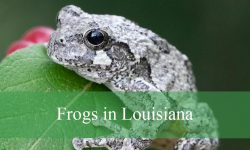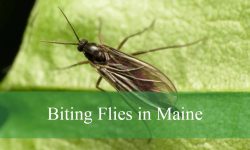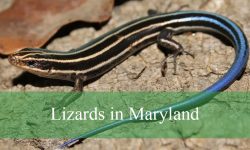Florida’s warm and humid climate provides the perfect environment for a wide range of ant species, including several that bite. While many ants are harmless, some can cause painful reactions that range from mild irritation to serious medical concerns.
Biting ants in Florida are not only a nuisance but can also disrupt outdoor activities, invade homes, and even damage crops and electrical equipment. Their aggressive behavior and large colonies make them difficult to control once they are established.
This guide explores 8 types of biting ants in Florida, with detailed identification, habitat information, and the effects of their bites. Understanding these species can help you recognize potential threats and take preventive measures to stay safe.
Different Types of Biting Ants Found in Florida
Red Imported Fire Ant (Solenopsis invicta)
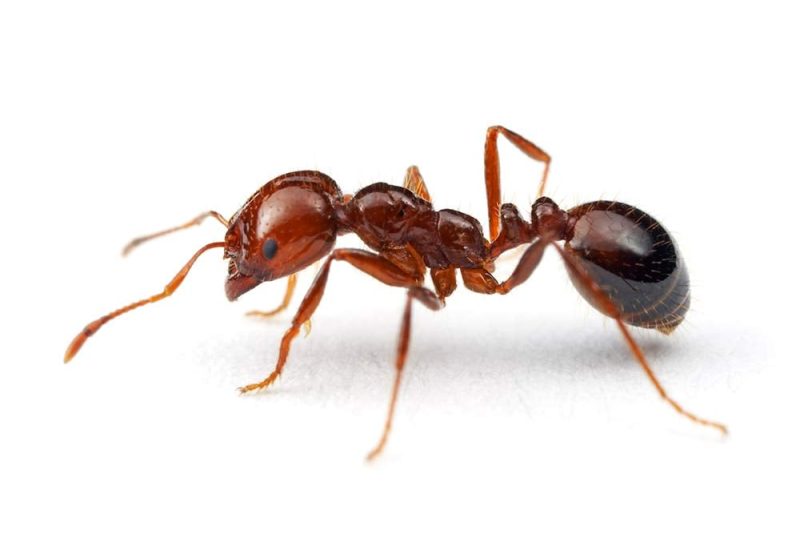
The Red Imported Fire Ant is one of the most aggressive biting ants in Florida, originally introduced from South America. These ants are reddish-brown in color and build large dome-shaped mounds in open areas such as lawns, fields, and along sidewalks. Their colonies are massive, often containing hundreds of thousands of individuals, making them a dominant invasive species.
When disturbed, fire ants swarm rapidly and attack in unison. Their bites are accompanied by a painful sting that injects venom, causing burning sensations and the formation of itchy, pus-filled blisters. For some individuals, especially those allergic to the venom, multiple stings can trigger serious medical reactions such as anaphylaxis.
These ants thrive in Florida’s warm, humid climate and are commonly found in both urban and rural environments. They prefer open, sunny areas and can displace native ant species due to their highly aggressive nature. Once they infest a location, it becomes difficult to eliminate them completely without professional control methods.
Because of their painful stings and destructive behavior, Red Imported Fire Ants are considered one of Florida’s most dangerous pests. They damage crops, electrical equipment, and native ecosystems, making their management a priority for both residents and authorities.
Native Fire Ant (Solenopsis geminata)

The Native Fire Ant is Florida’s original fire ant species, smaller in range compared to the invasive Red Imported Fire Ant. These ants are reddish to dark brown, with workers of varying sizes within the same colony. They typically build mounds that are smaller and less noticeable than those of the imported fire ants.
Although they share similarities with their invasive relatives, Native Fire Ants are less aggressive in their attacks. Their bites and stings are still painful, producing burning sensations and pustules, but they usually do not swarm as quickly or in such large numbers. Still, they can be a nuisance in areas where people frequently walk barefoot or disturb their nests.
These ants are often found in sandy soils, open fields, and disturbed areas across Florida. Unlike the imported fire ant, they are more likely to coexist with other native insect species, though they still defend their colonies aggressively when threatened.
Despite their painful stings, the Native Fire Ant plays an ecological role by helping to control other insects and scavenging organic matter. However, because the invasive species has largely displaced them, they are encountered less frequently in urban areas today.
Tropical Fire Ant (Solenopsis geminata var. tropica)
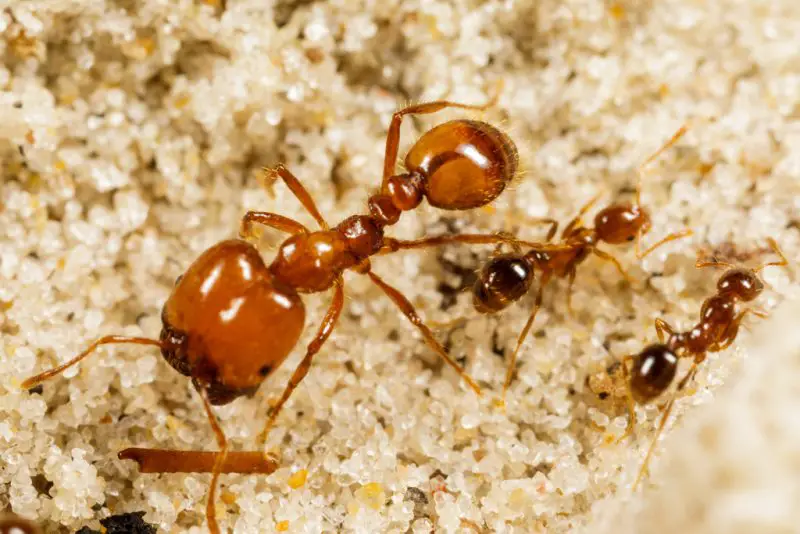
The Tropical Fire Ant is closely related to the Native Fire Ant but thrives particularly in Florida’s southern regions and coastal areas. These ants are reddish-brown and form mounds in sandy soils, often near grassy fields, beaches, and agricultural lands. Their colonies are highly adaptable, allowing them to spread across warm tropical and subtropical environments.
Like other fire ants, the Tropical Fire Ant delivers painful bites and venomous stings. Their venom causes intense burning, itching, and pustule formation, and repeated stings can result in more severe skin irritation. While not as invasive as the Red Imported Fire Ant, their aggressive defensive behavior makes them a concern for both residents and visitors in southern Florida.
They are particularly common in areas with moist soil and abundant sunlight. Colonies can be found in open ground but may also settle near human activity, leading to frequent encounters in parks, backyards, and crop fields. Their preference for tropical conditions explains why they are more concentrated in South Florida compared to the northern parts of the state.
Tropical Fire Ants can cause both medical and agricultural problems, as their stings pose health risks and their mounds interfere with farming equipment. Their presence highlights the diversity of biting ants adapted to Florida’s unique climate.
Carpenter Ant (Camponotus floridanus and other species)
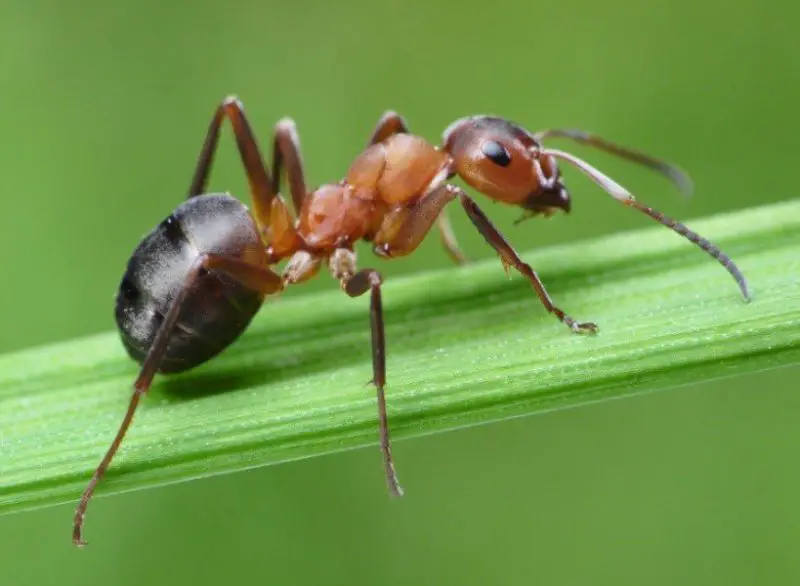
Carpenter Ants are among the largest ant species in Florida, with workers reaching lengths of up to half an inch. They are usually black or reddish-brown and are commonly seen in homes, yards, and wooded areas. Unlike fire ants, carpenter ants do not sting, but they do bite with strong mandibles, which can be painful.
Their bites are sometimes accompanied by a spray of formic acid into the wound, causing additional burning sensations. While not medically dangerous, their large size and powerful jaws make their bites unpleasant, especially if they feel threatened or are disturbed inside a home.
Carpenter Ants are most often found in damp or decaying wood, where they tunnel to build nests. They do not eat wood like termites but hollow it out to create galleries. This behavior can lead to structural damage in houses, particularly in roofs, porches, or wooden beams exposed to moisture.
In Florida, several carpenter ant species exist, but Camponotus floridanus is the most widespread. They are nocturnal foragers, often entering kitchens and pantries in search of sweets and proteins. While their bites are not as medically significant as fire ants, their ability to damage structures makes them an important pest to control.
Black Imported Fire Ant (Solenopsis richteri)
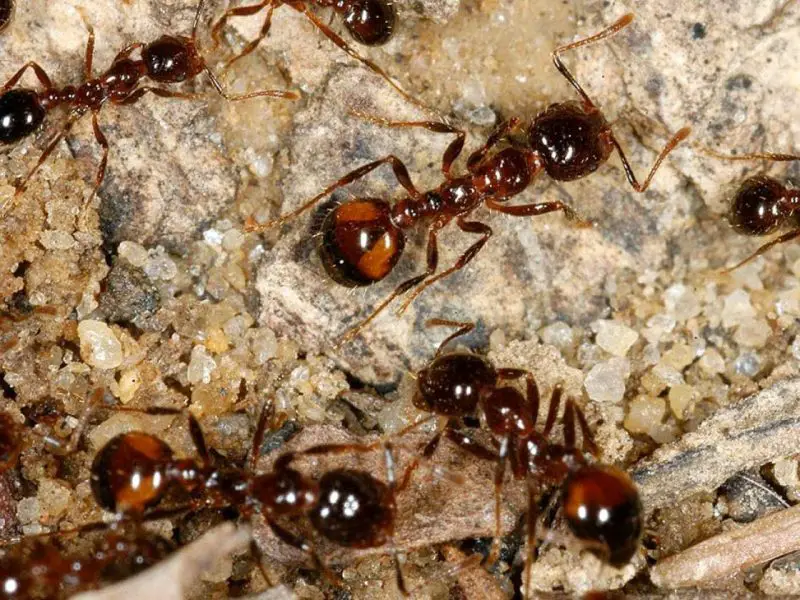
The Black Imported Fire Ant is less common in Florida compared to the Red Imported Fire Ant, but it is still present in certain regions of the southeastern United States. These ants are dark brown to nearly black in color, making them easy to distinguish from their reddish relatives. Their colonies are also large and aggressive, with mounds built in sunny, open areas such as fields, pastures, and lawns.
When disturbed, Black Imported Fire Ants swarm quickly and deliver multiple stings. Their venom produces burning pain, redness, and pustules, similar to the reaction caused by red fire ants. For sensitive individuals, the venom can trigger allergic reactions, sometimes requiring medical attention. Though less widespread in Florida, their presence still poses health risks where they occur.
These ants prefer moist soil and are often found in areas with frequent rainfall or near water sources. Their colonies may expand into residential zones, causing problems for homeowners and disrupting outdoor activities. They can also interfere with agriculture, livestock, and electrical equipment, just like the red species.
Although they are not as dominant in Florida, the Black Imported Fire Ant is an invasive pest that competes with native species and contributes to ecosystem imbalance. Their ability to inflict painful stings and cause economic damage makes them an important species to monitor and control.
Florida Harvester Ant (Pogonomyrmex badius)
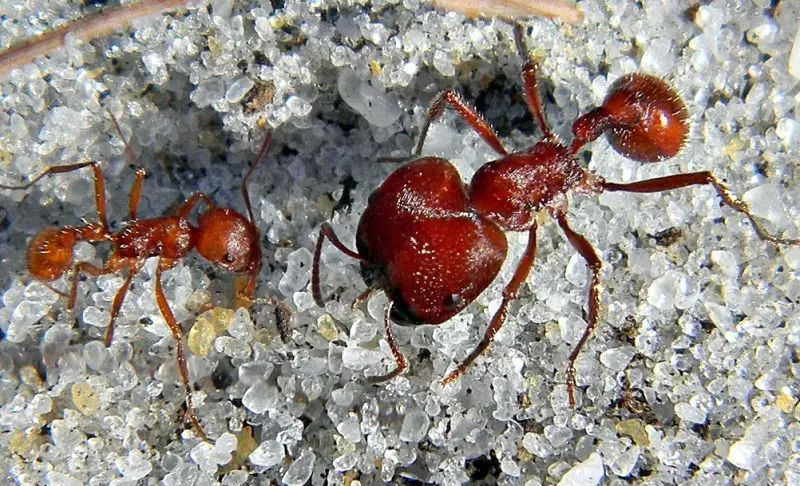
The Florida Harvester Ant is a native species known for its striking reddish-brown color and large size compared to other local ants. They are easily identified by their broad heads and preference for building nests in sandy soils, often leaving large, bare circular patches around their colony entrances. These nests are common in open, dry areas such as pine forests, fields, and scrublands.
Unlike fire ants, Harvester Ants are not as aggressive, but they will defend their colony fiercely if provoked. Their bites are followed by a venomous sting that can cause intense pain, swelling, and prolonged irritation. For some people, the reaction can last for hours or even days, making encounters quite unpleasant.
Florida Harvester Ants mainly feed on seeds, which they collect and store in underground chambers. This diet plays an important ecological role by influencing plant growth and seed dispersal. They are less likely to invade homes but are commonly encountered in natural and rural settings where their large nests are noticeable.
Despite their painful stings, Harvester Ants are considered beneficial insects because they help control plant populations and recycle nutrients in the soil. However, caution is advised when walking barefoot or working near their colonies, as they will not hesitate to bite and sting if disturbed.
Crazy Ant (Paratrechina longicornis and Nylanderia fulva)
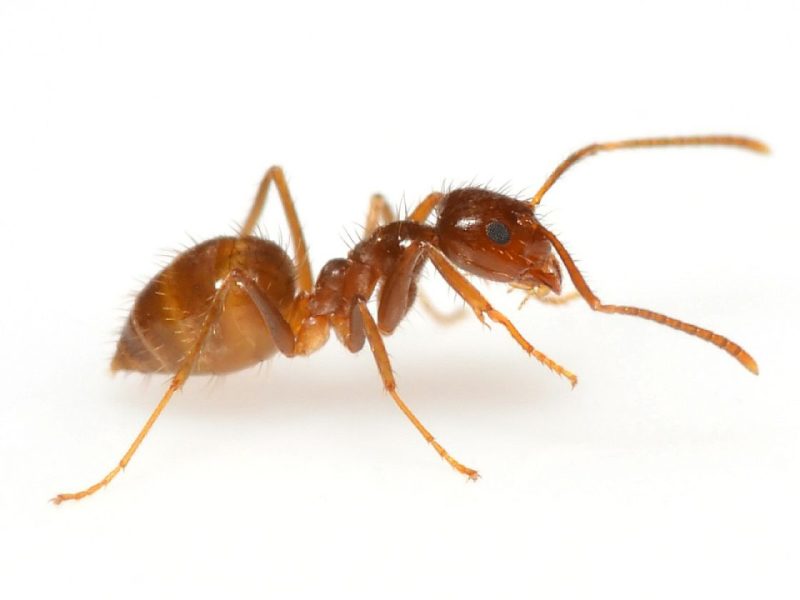
Crazy Ants are named for their erratic, rapid movements that make them appear “crazy” compared to other ants. In Florida, two main types exist: the Longhorn Crazy Ant (Paratrechina longicornis) and the invasive Tawny Crazy Ant (Nylanderia fulva). These ants are small, dark-colored, and often form massive colonies that spread across residential and natural areas.
Though they do not sting, Crazy Ants bite with their mandibles and can spray formic acid into wounds, causing mild burning and discomfort. The Tawny Crazy Ant, in particular, is a serious pest in Florida because it forms huge “supercolonies” that overwhelm native insects, small animals, and even livestock.
They thrive in moist, shaded environments and are frequently found in gardens, under debris, and inside electrical equipment, where they cause short circuits and damage. Their attraction to electronics makes them notorious household pests, sometimes leading to costly repairs.
The presence of Crazy Ants in Florida has become a growing concern due to their explosive population growth and ability to displace fire ants. While their bites are less painful than stings from fire ants, the nuisance they create through sheer numbers and property damage makes them one of Florida’s most problematic biting ants.
Bigheaded Ant (Pheidole megacephala)
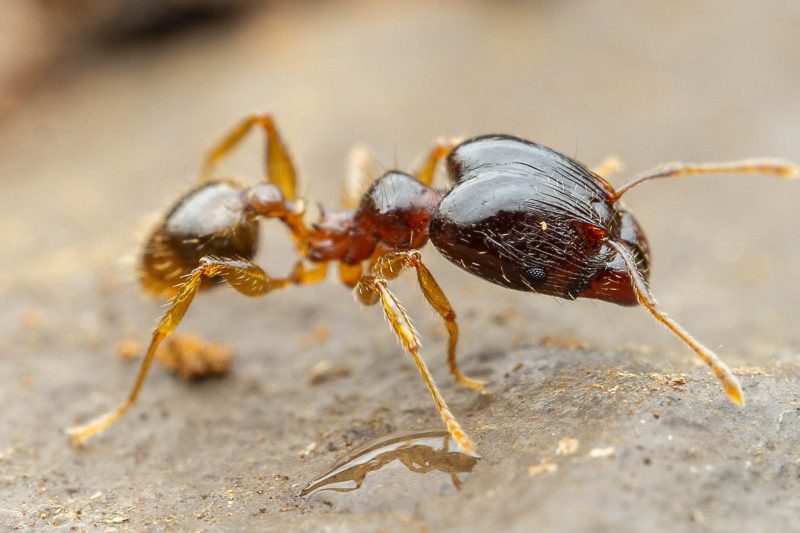
The Bigheaded Ant is an invasive species in Florida, originally from Africa. Its name comes from the disproportionately large heads of the soldier ants, which are used to crush seeds and defend the colony. These ants are small, ranging from light brown to reddish-brown, and usually nest in soil, under rocks, or in landscaped areas.
While they do not sting, Bigheaded Ants bite with their strong mandibles. Their bites are not medically dangerous but can be irritating, especially when large numbers attack at once. They are highly aggressive toward other insects and often eliminate native ant species where they become established.
Bigheaded Ants are commonly found in urban areas, especially around homes, lawns, and gardens. They prefer warm, humid climates and thrive in disturbed habitats, making Florida’s environment ideal for their spread. Colonies are large and may contain multiple queens, which helps them expand rapidly.
Because of their invasive nature, Bigheaded Ants are considered a threat to Florida’s ecosystems. They compete with native ants, disrupt soil processes, and can be a nuisance to homeowners. Though their bites are not severe, their persistence and aggressive behavior make them a challenging pest to control.
FAQs About Biting Ants in Florida
What are the most dangerous biting ants in Florida?
The most dangerous biting ants in Florida are the Red Imported Fire Ants (Solenopsis invicta). Their stings inject venom that causes intense burning, itching, and pustules. In severe cases, allergic individuals may suffer from life-threatening reactions such as anaphylaxis.
Do carpenter ants in Florida bite humans?
Yes, carpenter ants can bite humans using their strong mandibles. While their bite is not venomous, it can be painful, and some species spray formic acid into the wound, which increases the burning sensation. However, carpenter ant bites are not considered medically dangerous.
How can I tell the difference between native and imported fire ants?
Native fire ants usually build smaller, less obvious mounds and are slightly less aggressive than imported fire ants. Red Imported Fire Ants build large dome-shaped mounds and swarm rapidly when disturbed. Their colonies are also much larger and more destructive to ecosystems.
Are harvester ant stings dangerous?
Florida Harvester Ant stings are very painful and can cause swelling, redness, and long-lasting irritation. While not usually life-threatening, their venom can cause severe reactions in sensitive individuals. Caution is advised when near their large, sandy nest mounds.
Why are crazy ants a problem in Florida?
Crazy Ants, particularly the invasive Tawny Crazy Ant, are problematic because they form huge colonies that overwhelm native species and infest human structures. They are known to damage electrical equipment, cause power outages, and invade homes in massive numbers.
How can I avoid getting bitten by ants in Florida?
To avoid ant bites in Florida, wear closed shoes when outdoors, avoid disturbing visible mounds, and keep yards clean of debris where ants may nest. If you suspect an infestation near your home, professional pest control is the most effective way to eliminate colonies.

